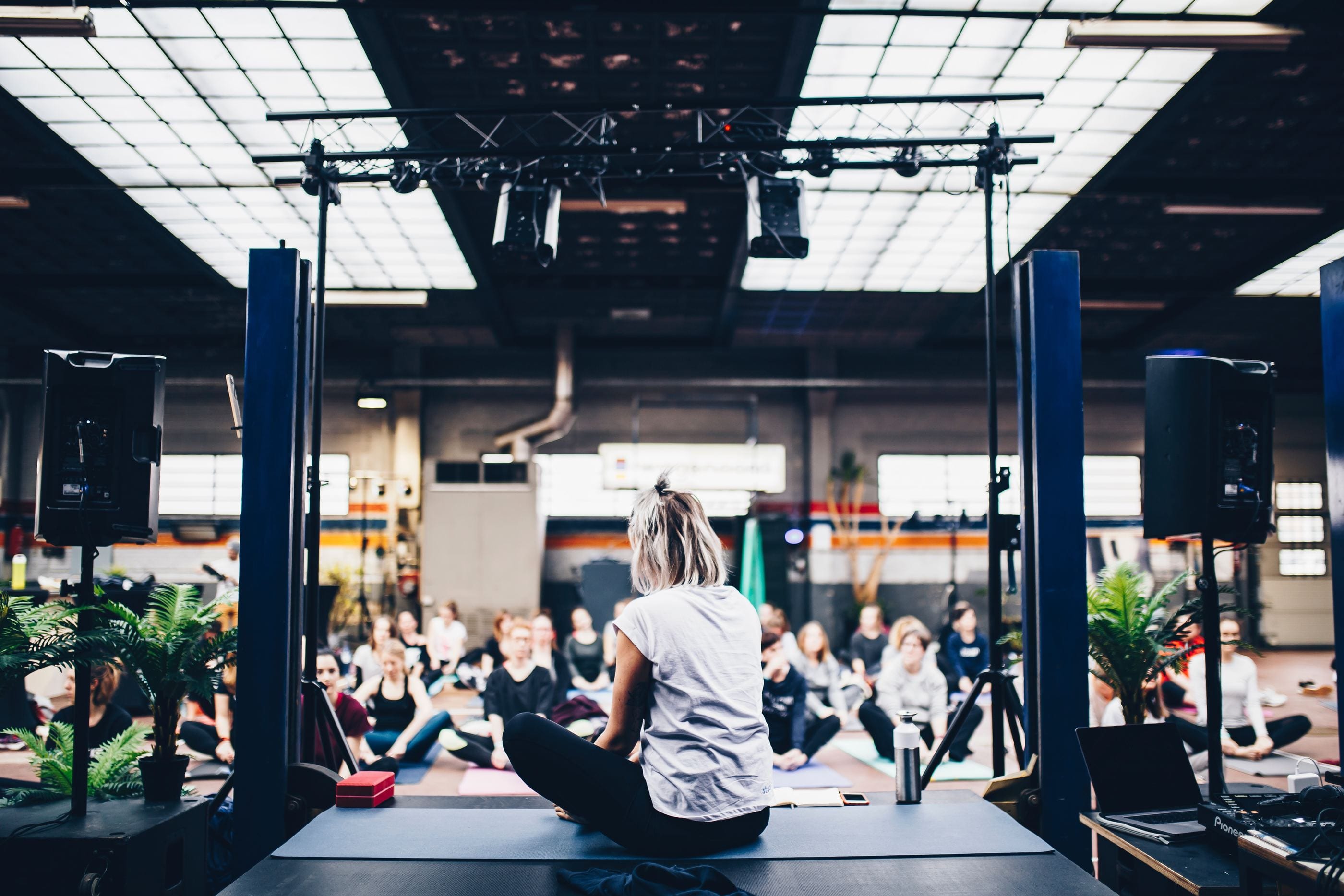
Many of us (myself included) head to a yoga class for a workout as challenging physically as it is mentally. Programs like Power Sculpt, HIIT Vinyasa, and Cardio Flows are rapidly populating yoga studio schedules everywhere. In a world that celebrates productivity and “killing two birds with one stone”, the possibility of getting a mental check-in as a well torching some calories seems like a pretty sweet deal.
And so it’s not surprising that yoga has shifted from being a form of physical therapy to being straight-up exercise. But let’s not neglect to explore the therapeutic benefits of yoga—especially in regarding to assisting body pain or helping to move along injuries.
Yoga for Athletes
According to Yoga Medicine founder Tiffany Cruikshank, Yoga for Athletes is “for athletes, who are already extremely active and need more balance to their already strenuous schedules.”
“This could be more of an active recovery class (think slow, accessible flow), passive recovery class (think more yin style), nervous system reboot (restorative, pranayama, meditation) for energy management, or cross training (a little of everything but generally a more challenging class), or something else based on the needs of the athlete,” Tiffany says.
“It’s really helpful for athletes, who already tend to be really competitive, to be surrounded by others who are also tight so that they don’t compare themselves to the bendy “yoga girl’ next to them.”
You don’t need to have “pain to gain.” Even if your preferred workout style isn’t a sweaty session on the mat, yoga can help benefit your regular workout routine, and prevent future injuries. Teachers working with athletes, or those unfamiliar with the practice, need to be especially mindful.
“Athletes need that constant reminder that they aren’t there to be the best at yoga but to use yoga as a tool to help them be better at their sport and their health to support that,” Tiffany adds. “I find the simple mindfulness it instills is often a huge asset as it helps them gauge when to push harder and when to back off their training to support their ability to push their body to the brink and still be healthy enough to bounce back each time.”
If you’ve got buds who love to move but have never tried yoga, consider sharing these benefits:
- Endurance. By regularly practicing yoga, we learn to move intentionally over long periods of time. Yoga forces us to develop mental and physical stamina, which can really come in handy when working on other workouts.
- Body Awareness and Focus. Yoga is different than other workouts in that it demands total focus on the body and the breath. In these moments, we need extreme amounts of focus. This level of body awareness can come in hand when you’re pushing yourself on the treadmill and need to hone in on some positive self-talk.
- Enhanced Recovery Time. When you practice yoga, you’re enhancing circulation and lymphatic flow, which allows the muscles to process metabolic byproducts at a faster rate. That means that post a hefty HIIT routine, your muscles will be far more apt to heal safely and strongy.
- Full-Body Strength. Yoga is a full-body workout—take a class a you quickly realize that you are working all parts of your being, from your abs to your calves to your arms. This is fabulous if your workout routines tend to focus on solely one area of your body. Power, strength, and speed are all directly connected to the overall alignment of our body. Work the entire thing, and watch athletic performance completely transform.
The Benefits of a One-on-One Session
A great place to witness the one-on-one benefits of a solo yoga session is in a private yoga class. You rid yourself of the potential “yogi comparison” that occurs from practicing beside another person and focus solely on your body. Perhaps you’ve been hyper-extending, or been straining your shoulders when moving in chatarunga. Private sessions help to remedy that.
“High level competitive athletes are basically training their bodies to go as far as they possibly can, to go to the brink without falling over the cliff,” Tiffany adds. “So a yoga practice needs to support that process and keep them healthy along the way because good health means good recovery which means good performance.”
“The beauty of yoga is that there are so many different styles of practice and therefore so many different tools we have to work with athletes. A teacher who has experience with this can be an invaluable asset to a pro-athlete.”
Other benefits include:
- Ability to try new poses. Half of the fun in yoga is getting to try new things. And while a handstand may seem intimidating, working with a private instructor allows you the space to try these things in a safe, judgement-free zone. You never know what you’re capable of—especially with thoughtful hands to help guide the way!
- Personalized schedule. Whether you’re a mama shuffling schedules or a basketball junkie who does improv on the side, finding time to squeeze in a yoga session might be hard for you. Instead of navigating class schedules, one-on-one sessions are like appointments, and allow you to be as flexible (pun-intended) as you need.
- Attention on health concerns. If you’re coming to yoga for therapy, you can work directly with the instructor and communicate any physical ailments. And since that instructor won’t be in a space where they need to split attention, you can make sure your concerns are totally addressed.
We understand the appeal of trying a variety of yoga classes and programs. Explore. Find what’s best for you and lean into that. You might be surprised at what you discover.
—
 Amanda Kohr is the editor at Wanderlust. You can find her exploring new highways, drinking diner coffee, and on Instagram.
Amanda Kohr is the editor at Wanderlust. You can find her exploring new highways, drinking diner coffee, and on Instagram.